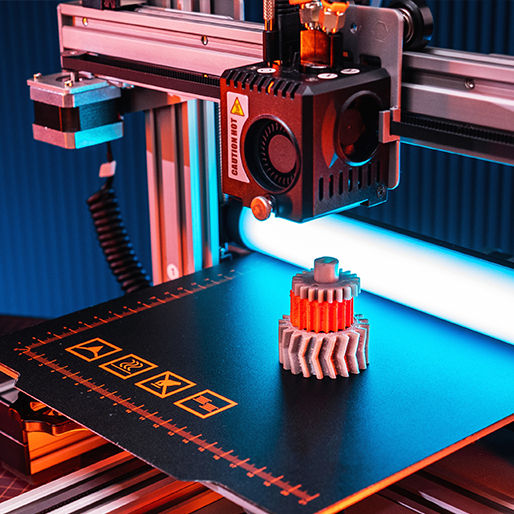3D printing, also known as additive manufacturing, is a process of creating three-dimensional objects from a digital file. It works by depositing material layer by layer until the object is complete. 3D printing is a versatile technology that can be used to create a wide range of objects, from prototypes to finished products.
3D printing technology has been around for decades, but it has only recently become more affordable and accessible. This has led to a surge in interest in 3D printing from both hobbyists and professionals.
How does 3D printing work?
The basic principle behind 3D printing is simple. A 3D printer takes a digital file and slices it into a series of thin layers. The printer then deposits material layer by layer until the object is complete.

There are many different types of 3D printing technologies, but they all work on the same basic principle. Some of the most common 3D printing technologies include:
- Fused deposition modeling (FDM): FDM is the most common type of 3D printing. It works by extruding a thermoplastic filament through a heated nozzle. As the filament is extruded, it cools and solidifies, forming a solid object.
- Stereolithography (SLA): SLA uses a laser to cure a photosensitive resin. The laser beam hardens the resin layer by layer, forming a solid object.
- Selective laser sintering (SLS): SLS uses a laser to sinter (fuse) powdered plastic or metal. The laser beam melts the powder layer by layer, forming a solid object.
What are the benefits of 3D printing?
3D printing offers a number of benefits over traditional manufacturing methods, including:
- Design freedom: 3D printing allows you to create complex shapes that would be difficult or impossible to produce with traditional methods.
- Customization: 3D printing makes it easy to customize products to meet the specific needs of each customer.
- Reduced waste: 3D printing produces less waste than traditional manufacturing methods.
- Rapid prototyping: 3D printing can be used to quickly create prototypes of new products, which can help to reduce the time to market.
ALSO READ :> MLM Companies: What You Need to Know
What are the applications of 3D printing?
3D printing is used in a wide range of industries, including:
- Aerospace and defense: 3D printing is used to create lightweight and complex parts for aircraft and other military vehicles.
- Automotive: 3D printing is used to create prototypes of new car parts and to manufacture custom parts for racing cars.
- Medical: 3D printing is used to create medical devices, such as implants and prosthetics.
- Consumer goods: 3D printing is used to create a variety of consumer goods, such as jewelry, toys, and home décor.
The future of 3D printing
3D printing is a rapidly developing technology with a wide range of potential applications. In the future, 3D printing is expected to be used to create even more complex and sophisticated products. It is also likely that 3D printing will become more affordable and accessible, making it available to a wider range of people.
Overall, 3D printing is a revolutionary technology with the potential to change the way we manufacture and consume goods.




